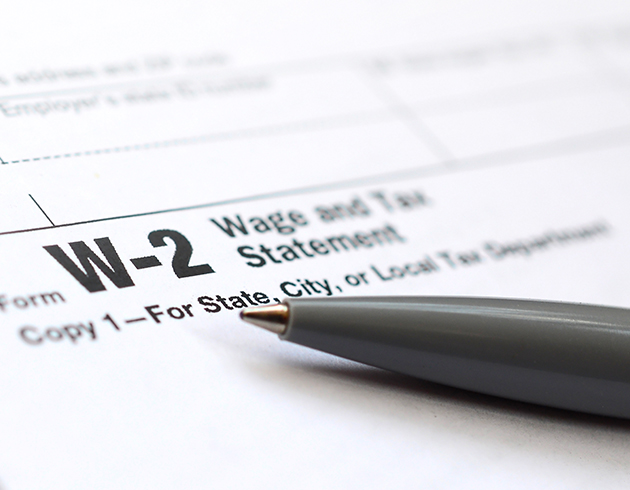Every year as we go through the first 3 ½ months I see a pattern in society that is equal parts frustrating and amusing. People get their W2s, rush to file their taxes, and get their hands on a big, springtime return they’ve probably already spent three times over inside their heads.
It never fails to hear people bragging about the thousands of dollars they received back. They act as if they’ve won the lottery or some unforeseen inheritance has been gifted to them, but we who have a more skeptical eye know the government doesn’t just give handouts. A return is simply them return-ing our OWN money back to us that we’ve naively loaned to them throughout the year… at zero interest. Those who are more savvy understand that a big return simply means less money stayed in your pocket throughout the year, and some simple adjustments could be huge. But most people are blissfully unaware of how much money they’re wasting.
Income taxes are overly complicated, and much of that is by design. Many government programs are so vaguely worded – or actually overly worded and needlessly complicated that normal people without a law degree can’t figure out how to use them correctly. One of the earliest (slimy) tricks in marketing was to make an offer sound good enough to entice a purchase, but then make it almost impossible to redeem. Companies would offer a rebate after purchase and make the consumer jump through so many hoops to get the benefit they’d eventually just give up. For fear of litigation, government programs require miles of fine print, and, let’s be honest, sometimes they roll out a program just for the sake of appearances. Not everything that makes its way out of Washington is actually trying to solve a problem, but they can still point to Bill #375.2 Article Q and say, “Hey, we tried. The people just didn’t take advantage of the program.”
With that being said, there are still some serious promotional advantages out there for your homeowners and opportunities for you to set your business apart by offering them – if you’re willing to dig through the fluff, jump through the hoops and cut some red tape. Many of your competitors might be going glassy-eyed trying to figure out exactly how to take advantage of the newest buzz word. As they toss it to the side because they can’t understand it, it gives you leeway to steal market share.
People need help understanding how to best take advantage of technological advances, government incentive programs, and manufacturers’ rebates. They need you to educate them, and considering some of the 100-page documents with 19 appendices we receive, it feels like being asked to teach advanced trigonometry to a 3rd grade class.
SEER-2 and the Inflation Reduction Act (IRA) are the big things on the table right now in HVAC, and there’s always something brewing in each industry. But how do you know which to take advantage of, how to take advantage, and then (even more daunting) how to explain it to your market in a way that makes sense to them?
Here are a few pointers…
- Educate Yourself: We must start here. There are no true
shortcuts, but there is help available. This is one of the main
advantages of industry partnerships, success groups, and coaching
programs. Whether they’re mainly government lobby groups like ACCA, more
training focused like EGIA, or one-on-one marketing coaches like
Hudson,Ink, lean on these partners to educate you on the ins and outs of
these powerful programs. No one expects you to understand all the
intricacies of the US Tax Code while also running your business. That’s
why we have accountants to help. And no one expects you to be able to
stay on top of all waves of changes, rebates, incentives, and phase-outs
(and how to effectively market them) each year without help either.
That’s why you have friends who will do the homework for you and are
more than willing to offer some advice.
- Be Clear: The next (and more difficult) step after you
understand the information is being able to effectively communicate it
to others. Again, this is where a trained coach and marketer are worth
their weight in gold. For example, one of the most common mistakes we
see as marketing coaches is having your message filled with industry
jargon. Just because you understand what SEER ratings are or the
importance of backflow prevention does not mean you can assume the
homeowner does – or even wants to. Be careful not to insult anyone’s
intelligence and make a marketing piece sound condescending; but speak
clearly and explain as fully as possible with the space you’re allowed.
Avoid slang terms and unexplained acronyms as well.
- Build the Case: The final battle is turning information about a new change, promotion or opportunity into a new customer invoice. But you can understand the change AND communicate it to the customer so that they understand it and it still not be enough. They must see how this new change affects them and why they should care. Building excitement and interest while informing the reader is the key to good sales copy.
In-home contractors are tasked with understanding and fixing some of the largest and most expensive appliances in the home. Normal homeowners do not have the time nor the desire to stay on top of the latest industry bills rolling out of Washington or your dealer’s Spring promotion. But as their trusted expert, they ARE relying on you to show them how to save the most money and keep their homes running efficiently. Take the time to study what’s going on around you, use advisors and consultants to help you organize, get out a clear message, and go to bat for your customers.
Simply email [email protected], call 800-489-9099, or visit hudsonink.com to schedule a complimentary strategy session.

